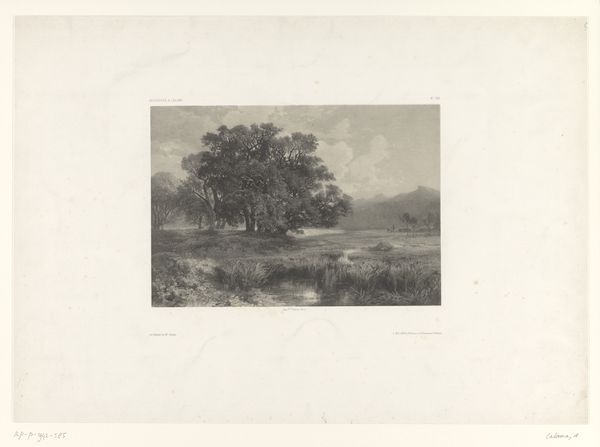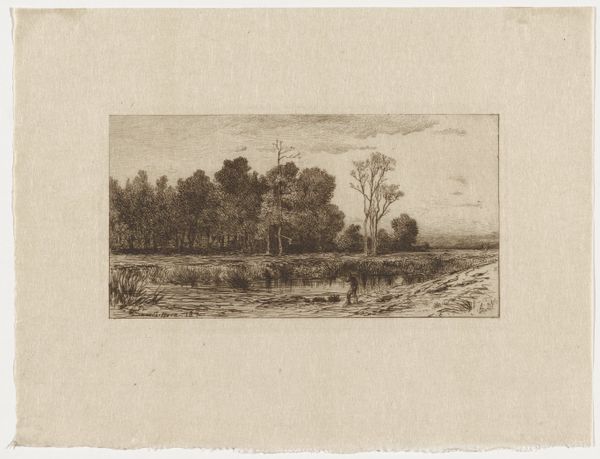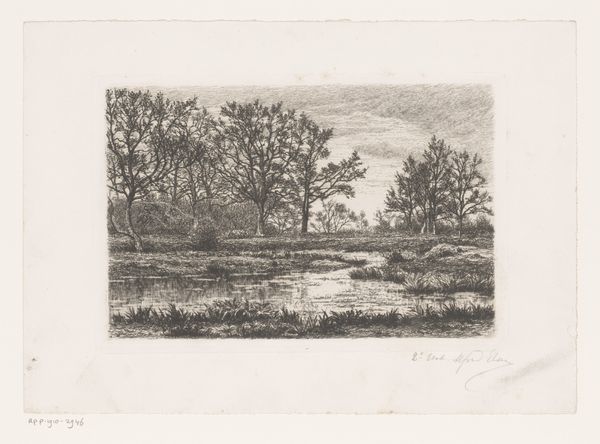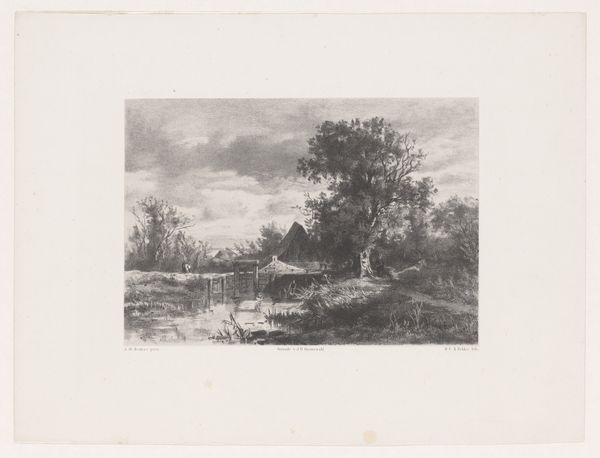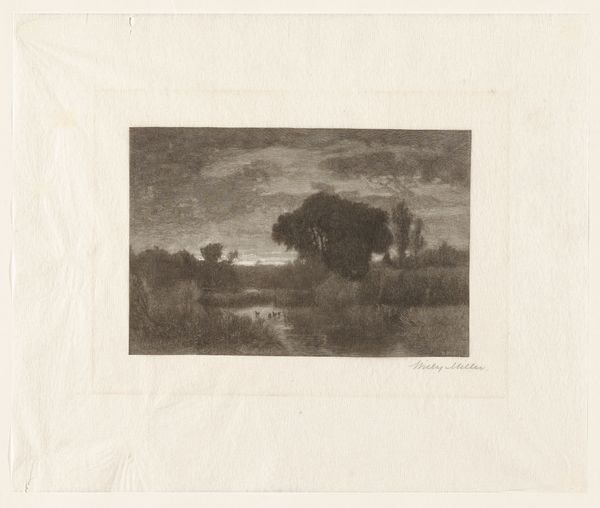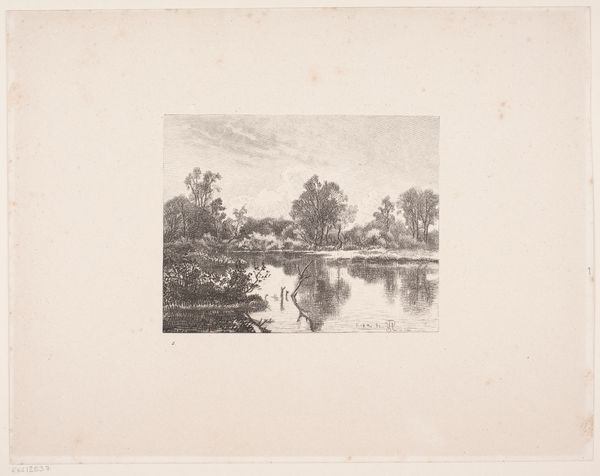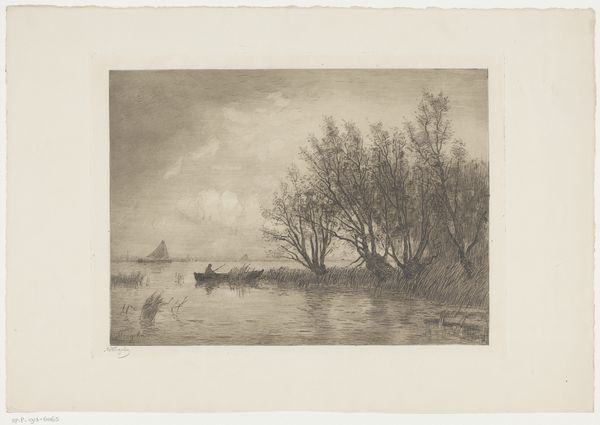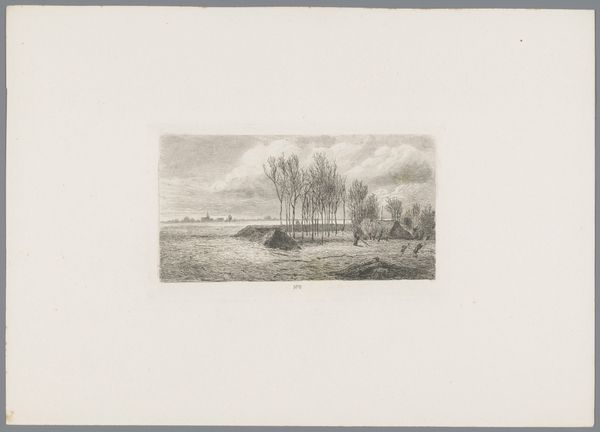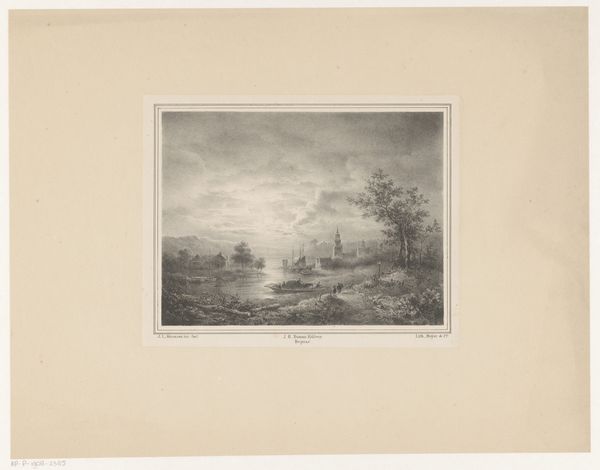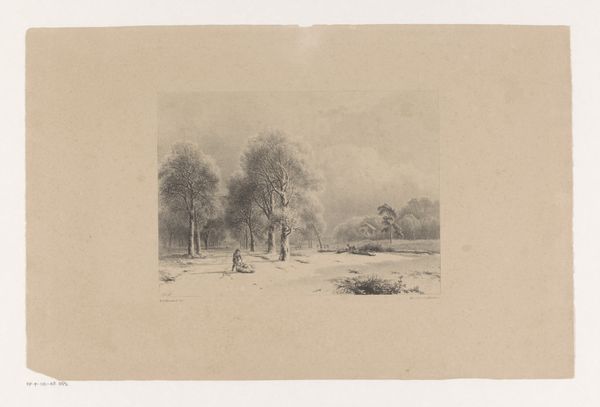
print, etching
# print
#
etching
#
landscape
#
romanticism
#
united-states
#
realism
Dimensions: 7 x 11 3/8 in. (17.78 x 28.89 cm) (plate)12 1/2 x 17 in. (31.75 x 43.18 cm) (sheet)
Copyright: Public Domain
Editor: Here we have Henry Farrer's "Sweet Is the Hour of Rest," an etching from around the 19th century. The subdued tones and quiet stillness really strike me. What do you see in this piece, beyond the tranquil surface? Curator: I see more than just a pretty landscape; I see a reflection of societal anxieties and yearnings. How does this serene depiction contrast with the rapidly industrializing world of the 19th century, especially in the United States? Doesn't this pastoral scene idealize a nature that was quickly disappearing, reflecting a longing for simpler, perhaps more equitable, times? Editor: That's an interesting point. It does feel like a curated escape. How does the technique itself, the etching process, contribute to this feeling? Curator: Etching allowed for a delicate rendering, a control that maybe reflected the desire to control and tame nature itself – an approach rooted in European romanticism and anxieties over progress. What voices are missing from this idyllic scene? Who has access to this “hour of rest”? Think about class, race, and gender in this historical moment. Editor: So, the title itself becomes a loaded statement. It makes me consider who actually *had* the privilege to experience rest and relaxation. Curator: Exactly. The artist's intent is less about presenting an unbiased scene, but highlighting privilege in the guise of a nature scene. Now what are your thoughts after taking this new lens? Editor: I came in seeing a calming landscape. Now I'm grappling with questions about privilege, access, and the artist's subtle commentary on a changing society. It shows me how much art reflects power dynamics, even when it seems apolitical. Curator: Precisely. Let’s try to look at artworks as a mirror to these systems.
Comments
No comments
Be the first to comment and join the conversation on the ultimate creative platform.
